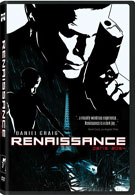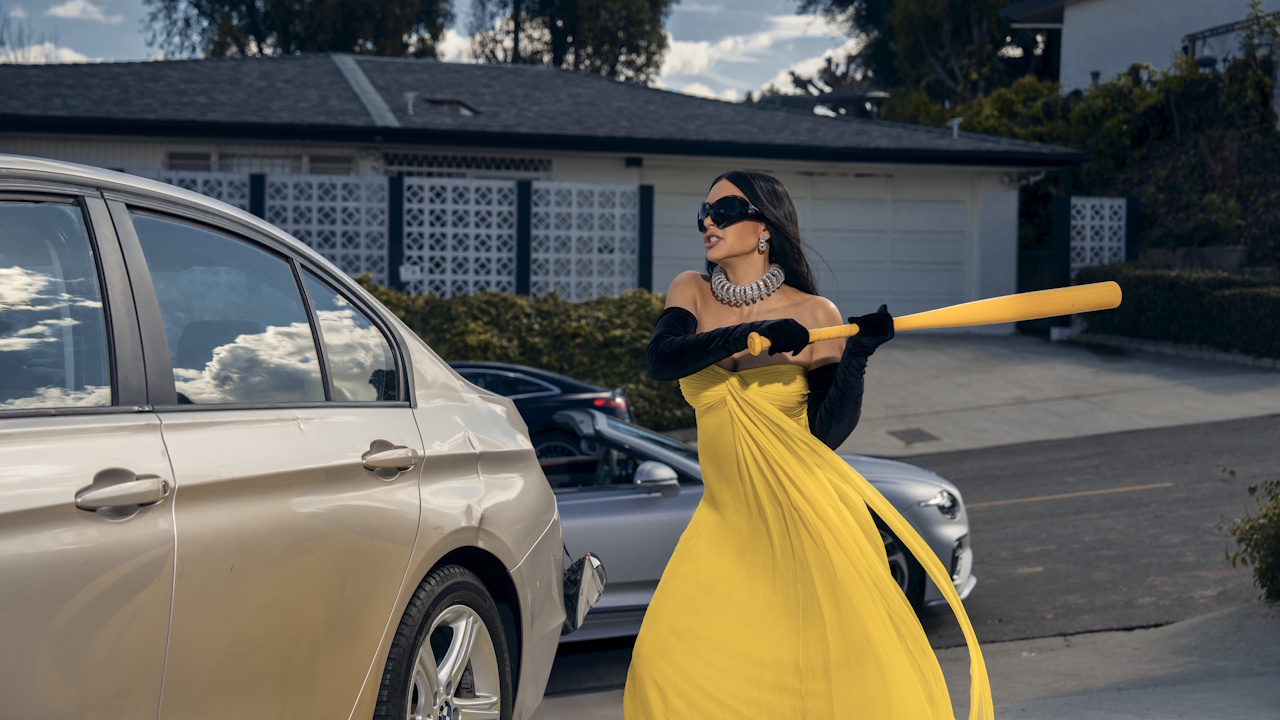If there’s anything good storytelling has shown us it’s that the world is not black and white. Things are not pure good or evil, smart or dumb, etc. The world is made up of a whole lot of gray. Take away that gray and you lose a lot of detail. Now, I’m speaking metaphorically, but at a literal level that right there describes one of the pivotal issues behind Renaissance: no gray, no detail. The French film Renaissance considers itself to be a modern day Blade Runner, which it almost manages to pull off. Set in the near future (when did 2054 become the “near future”?) in Paris, the movie is almost pure detective noir filmmaking. A police captain is looking for a missing woman, a promising employee of the Avalon Company, which is the domineering corporate force in this movie’s future (like Aliens’s Weyland-Yutani company or Tyrell Corp from Blade Runner). As Captain Karas pursues the missing woman, it soon becomes evident that, like most Noir stories, the “who” (as in “who has her?”) isn’t anywhere near as important as the “why”.
Renaissance takes noir filmmaking to the next level with a animated motion-capture style that is presented in pure black and white. The effect takes the dark underworld and crosshatch shadows common to noir style and intensifies it drastically. It’s an amazing visual effect at times and I found myself constantly astonished by the graphic imagery of the movie, transparent surfaces in particular. Through these black and whites, the future Paris is a nefarious place where crime and deception lies in every shot. The unsettling vibe is increased when rain or snow enters into the mix, which it does quite frequently.
Unfortunately, while the visual element of the movie creates some intense landscapes, it doesn’t do quite as well for the animated characters within the movie. With only black and white to work with, half of any figure is constantly thrown in shadow, while part of the figure is bathed in light. Without any gray to provide contrast, there is nothing to define the characters other than pure light or pure dark. It’s a digital representation: on or off, with no in between. The result is a loss of facial expression and subtlety within the performances of those captured.
With the black and white style hampering the visual subtleties, all that’s left are the vocal performances of the movie. Renaissance was originally a French film so the English performances had nothing to do with the animation of the characters. They are just voices added in. In the case of Daniel Craig, who voices the lead character Karas, this isn’t a problem. Craig is a more than capable actor and I remain confident that he’ll be one of the greatest performers of the current generation of actors. From the tall, lone detective-figure to a softer, more sensitive side, Craig’s vocal performance overcomes the visuals and gives his character some depth and range. The rest of the characters, voiced by what should be a talented cast (Ian Holm, Catherine McCormick, Jonathan Pryce, to name a few) don’t fare nearly as well, winding up as flat characters in a black and white world.
Renaissance is hardly the rebirth the name would have you believe the movie is. I have no doubt that director Christian Volckman was attempting to revolutionize science fiction and film noir with a new visual approach. The visuals do manage some incredible moments painting the landscape, but when it comes to defining the characters it’s a mistake of style over substance. Characters such as these should never have been shown in pure black or white. There’s a world of grays in between that should have been used to create substantial dynamic characters if Volckman truly wanted to create a new Blade Runner. With its pure black and white presentation, Renaissance has an opportunity to really shine on home video. Since most of the image is “on” or “off” with no contrast in between, it’s the kind of movie that can look good on almost any television, with one exception. Many new HD televisions still have problems recreating a true “black” level, which could cause problems viewing Renaissance on fancier home theater setups. I should mention this is merely a suspicion. I played the movie on an older, standard television, a rear-projection high definition unit, and a high definition LCD monitor without any problems, but black has been a recurring problem with high definition, especially on the plasma side, so be aware it could be a problem.
On the visual displays I did get to view the movie on, the picture was incredibly clear and vibrant. The movie is also being released on Blu-Ray, but I can’t imagine a need for the increased resolution for picture quality. The standard 480p looked fantastic.
By default this is the English version of the movie, which works fine. The voices fit and you have no strange dubbing issues. If you like, the French version is also available for your viewing pleasure. The movie is no different; it’s just the French voices with English subtitles.
Your Daily Blend of Entertainment News
The only bonus material on the disc is a short making-of featurette, which is entirely in French (with English subtitles). There is no talk at all about the English version of the movie or the casting process; this is just about the style and approach to making the movie. There’s a detailed description of how motion-capture animation works, and Volckman and others talk about the visual approach to designing the future Paris (it’s a predictional movie instead of a fictional movie). Thankfully, they also give credit to the original score by Nicholas Dodd, which goes a long way to building the atmosphere of the film.
Renaissance is an enjoyable picture with a rather common noir storyline and nothing to set it aside other than its unique visual style. It’s a shame that the style is as much a hindrance as it is a strength. I’d recommend giving the story a look to the truly dedicated sci-fi/noir fan; otherwise this one can be passed by.

